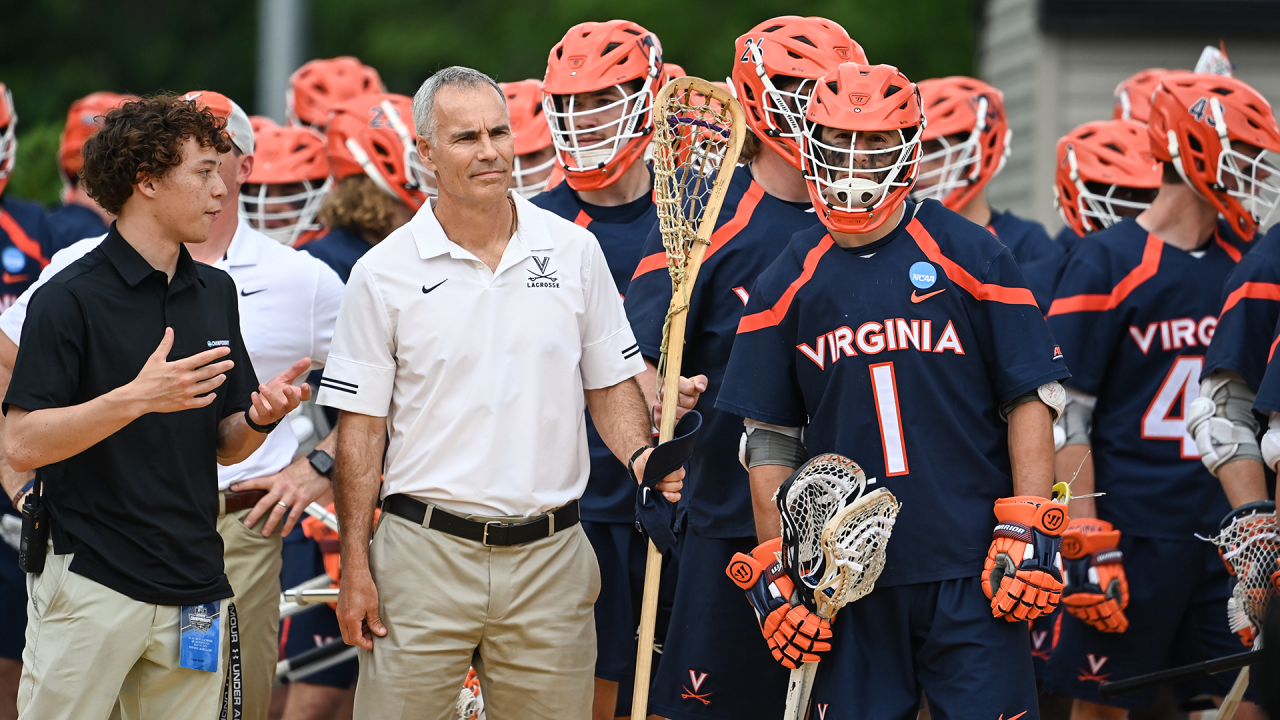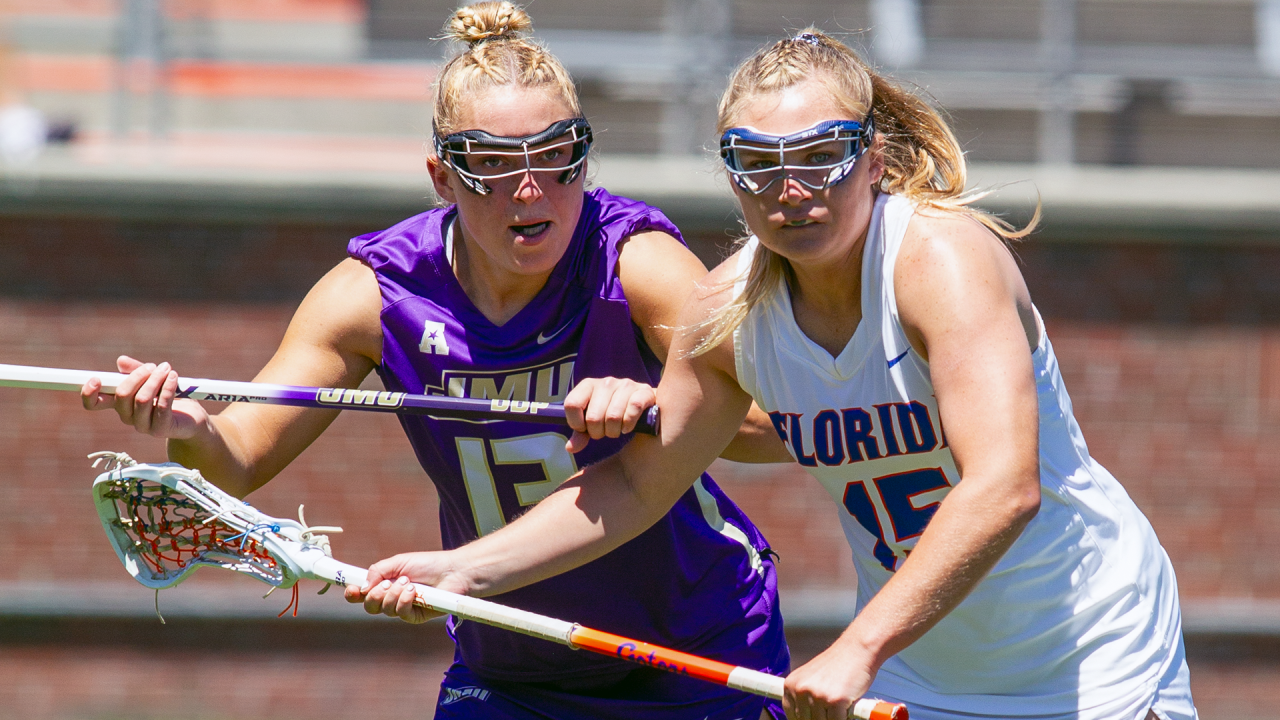
What the NCAA Antitrust Settlement Means for College Lacrosse
A potential NCAA antitrust settlement could mean a scholarship boom for lacrosse — or a financial bust.
The filing of formal settlement documents between the NCAA and the power conferences last Friday in the Northern District Court of California — the next step forward in trying to resolve three class-action lawsuits — has raised more uncertainty than anything.
“Business as we've known it in the world of college athletics is going to change,” Duke women’s lacrosse coach Kerstin Kimel said. “And anybody who thinks they know what this is going to look like in real time, they're kidding themselves.”
USA Lacrosse Magazine interviewed more than a dozen coaches and administrators for their perspectives on how this seismic shift in the college athletics landscape could affect the sport. The range of outcomes — not all of them positive — broadens by the day.
48 Scholarships? Unlikely
The $2.8 billion settlement that addresses House v. NCAA, Hubbard v. NCAA and Carter v. NCAA opens the potential for a huge increase in scholarships in lacrosse. The NCAA would replace scholarship limits with roster caps based on the average roster size for each sport, with every athlete eligible to receive a scholarship.
As first reported by Yahoo Sports’ Ross Dellenger, the scholarship allotment for Division I men’s and women’s lacrosse would jump from 12.6 to 48 and from 12 to 38, respectively, based on new roster limits.
Those increases in theory would create more than 2,500 additional Division I men’s lacrosse scholarships and more than 3,000 additional Division I women’s scholarships annually, which has social media buzzing with parents and players envisioning a swell of new opportunities.
“Some of the scuttlebutt of people saying, ‘Oh, teams will have 48 scholarships,’” Maryland men’s lacrosse coach John Tillman said. “I just don't see that happening.”
That’s because there are massive financial ramifications, regardless of the school or conference. The settlement would permit schools to compensate student-athletes directly for the first time ever, the final nail in the coffin of the NCAA trying to label college athletes as amateurs. They could share up to 22 percent of their revenue, which for large power conference schools means $20-22 million annually. That could reduce the influence of Name Image and Likeness deals that began in 2021.
Student-athletes at schools that opt in to the new revenue sharing could still receive NIL deals above and beyond the money they receive from their school, but any NIL agreement over $600 would have to be reported and be subject to review for legitimacy by an enforcement board. They want to have more transparency and eliminate pay for play deals.
“If you do opt in and go above and beyond what is permissible right now in terms of supporting your student-athletes in an additional financial way then you have to opt into all of the requirements of the settlement which are the things that you're reading about – roster sizes, the change in scholarship permissible amounts, the reporting for transparency, the accountability,” Atlantic 10 commissioner Bernadette V. McGlade said. “So if you opt in, then you have an entirely additional set of regulations that you're going to have to abide by.”

'Nobody Has a Money Tree'
Despite public misconceptions, the majority of college athletic programs lose money despite huge media rights deals for the biggest football conferences. If the settlement goes through, the money to share revenue with athletes likely will go predominantly to high-profile sports like football and basketball and put a financial strain on non-revenue sports like lacrosse.
On top of revenue sharing, most schools would opt to expand their football and basketball scholarships to the new maximum.
“Nobody has a money tree in their backyard,” said IWLCA president Kelly Gallagher, the head women’s lacrosse coach at Division II Tampa. “So if schools are definitely adding the 20 additional scholarships to football, where is the money going to come from to get to whatever that number is for their women's lacrosse team?”
The settlement also calls for all Division I schools to pay back about $280 million per year for the next 10 years to former student-athletes that were restricted from earning money dating back to 2016 before NIL legislation was passed in 2021.
Big East commissioner Val Ackerman wrote a letter protesting the smallest 22 conferences being forced to pay such a large amount (60 percent) of the Division I schools’ settlement cost, but her counterproposal reportedly was not seriously considered..
The settlement looks costly, particularly for such small schools that never reaped all the benefits of big conference football and basketball.
However, the alternative could have bankrupted the NCAA.
“If you end up going actually to trial in court, you run this tremendous risk of treble damages,” McGlade said. “It could be up in the $20 billion number, which could be certainly devastating for the entire world of intercollegiate athletics in the NCAA.”
Schools will see a portion of their NCAA championship television revenue payments, largely as a result of basketball, withheld to chip in to the settlement payback.
“That will have a negative impact on athletic departments because it's a loss of revenue that you thought you might have had, and now you have to pay back,” Saint Joseph’s men’s lacrosse coach Taylor Wray said. “It’s not that you lost the revenue retroactively, but whatever you thought your conference payout was going to be is going to now be reduced because of the share that your school will have to pay back.”
That could cost non-Power 4 schools about $1.3 million over the next 10 years. That’s more money bleeding from budgets, and it makes adding scholarships even more difficult. Schools will look for ways to cut costs and to raise funds. They can gain only so much from increased ticket price and tuition fees and new donations.
“I've got to wear my fundraising hat a whole lot more than I ever used to,” Virginia men’s lacrosse coach Lars Tiffany said. “Those extra scholarship opportunities are not coming for free.”
All Olympic sports coaches fear the axe. They wonder what their worth is to their school and how it fits in.
John Danowski
'Walking on Eggshells'
Many coaches are worried not about financing more scholarships, but rather losing their existing ones. There are still a number of programs that don’t meet the scholarship maximum now.
“If anything, schools are getting less money, and now you think you're going to get more scholarships? It ain't happening,” Wray said. “If anything, scholarships are going to be taken away from sports that are deemed not as big of a priority at certain institutions. This is not going to add scholarships across the board. If anything, I think it’s going to crush certain sports.”
Schools that receive federal funding still have to abide by the Title IX mandate for equitable men’s and women’s scholarship numbers based on their enrollment. Those that add 20 football scholarships either will have to add the same amount for women’s sports or cut from other men’s sports.
“That's the fear I have. If basketball gets two more scholarships and if football gets 20 more scholarships, where does that come from?” Duke men’s lacrosse coach John Danowski said. “Does that come from the male side? Because you need to be aware of your Title IX balance. Or is there going to be an increase from the universities?”
What concerns lacrosse as a non-revenue sport — Tiffany calculated that Virginia men's lacrosse lost $1.3 million one year — is being one of the sports on the chopping block for schools looking to make budgetary cuts.
“I think all Olympic sport coaches fear the axe,” Danowski said. “They wonder what their worth is to their school and how it fits in. Until it's all figured out, I think everybody's walking on eggshells a little bit.”
Some coaches are exploring the option of endowing their scholarships to protect them from cuts. Tiffany said that would come at a price tag of approximately $1.5 million per scholarship at UVA.
Danowski believes it’s closer to $2 million per scholarship at Duke. “It would take 30 years,” he said. “If you're a president of the university, that's what you want your coaches to do. You want your coaches to go out and fundraise and find these major donors.”

Will the Rich Get Richer?
While Division I schools are on the hook for the payback from the settlement, they do not have to opt in to the new proposal.
Karen Weaver, adjunct assistant professor at the University of Pennsylvania’s Graduate School of Education, focuses on how college sports and higher education coincide. A former Division I and Division III head coach and athletics administrator, she has been following the settlement and written about it in Forbes.
“If a Division I school like James Madison or someone that is not in a Power 4 conference decides not to do revenue sharing, then none of this applies for them,” Weaver said. “The revenue sharing becomes the trigger.”
That opt-out route seems more likely for schools in the Ivy League, which cannot offer scholarships anyway. It’s predicted that things would be status quo for a program that does not opt in aside from contributing the back pay to the settlement.
“If you were content offering exactly what you’re offering now, then you can keep doing it,” McGlade said.
Schools can opt in individually, or whole conferences can vote whether to opt in. And they can opt in for just one sport, though doing so would trigger the new regulations and compliance required with the settlement.
“All these schools are going to have to come up with an additional $20 million every year to pay these students and they just have to figure out where that's going to come from,” Penn men’s lacrosse coach Mike Murphy said. “It’s actually going to tighten some belts, I think, at other places more than it will affect the Ivy League.”
Division I schools’ different approaches raises more questions about competitive balance. The playing field could tilt more toward the haves than the have nots.
“There is definitely that fear of the more financially stable schools getting richer,” Gallagher said.
Weaver has written in Forbes that every school without big media contracts like those in the SEC and Big Ten “will likely face difficult financial choices to be competitive in NCAA Division I, including sport sponsorship.”
Separating Sports into Tiers
An idea floated out frequently is a tier system. The tiering of sports would be done by each school.
“The top tiers get the most support and then the middle tier will get some support and then the lower tier sports,” Tillman said. “My gut feeling would be that administrators would communicate where you are and what they're going to be able to do.”
Playing levels could spread within Division I itself. Gallagher raised those concerns about schools having a range of resources.
“Initially when all the transformation stuff started, there was a talk about, would we end up with this other subdivision of Division I?” she said. “There's definitely higher financial stakes now.”
Former Denver men’s lacrosse coach and current IMLCA president Bill Tierney sees the breakdown going further.
A first group could increase scholarships to something like 25, he said. A second group could continue to support what previously existed. A third group would remain in Division I but not even match the 12.6/12 scholarships limit. A fourth group would eliminate scholarships and go club. And the fifth level that drops lacrosse entirely.
“Schools that decide to go big in lacrosse — Hopkins, maybe Northwestern women — they might do that,” Tierney said. “If they do, it’s going to make the separation even wider. Right now, the separation is wide with ACC and Big Ten.”
'You Can't Miss Anymore'
Roster limits will also impact programs. There is a range at the Division I level already, and some are still bloated with players on an extra year after pandemic exceptions. Two-time defending men’s lacrosse champion Notre Dame had 60 players rostered last year. NCAA women’s lacrosse semifinalists Florida and Syracuse had 40 and 42 players, respectively.
“It's going to be interesting to your recruiting side because you can't miss anymore,” Gallagher said. “It's only 38 kids. Hopefully you don't have a bad year with injuries.”
The trickle-down effect could send more players to Division II and III teams, or traditionally smaller Division I teams. However, if Division I schools do find the money for more scholarships, it could have the opposite effect.
“Now with the scholarship money that's out there, it makes our job harder to pull in that person who's teetering on the fence of D-I or D-III,” said Kate Livesay, coach of NCAA Division III women’s lacrosse champion Middlebury. “It becomes harder to go D-III and pass up on what could be a really nice scholarship.”
Overall, though, sub-Division I coaches aren’t expecting to see many changes at their levels from the settlement’s fallout. They are not worrying about a reduction in players.
“Many of our schools rely on sports like lacrosse to help fill the beds and fill the seats in classrooms,” said Tampa men’s lacrosse coach J.B. Clarke, the current IMLCA president. “So I think Division II and III are in many instances safer in the Olympic sports than Division I.”
Layers of Law
The settlement would not be enacted until at least the 2025-2026 academic year, and it still could change. The proposal is scheduled to go before federal Judge Claudia Wilken on Sept. 5, but that date could move. She is reviewing the settlement.
“What are the chances that she's going to agree 100 percent with everything in there?” Weaver said. “Probably not great. We could be going back and forth on this for months, if not longer.”
Complicating the matter still are the layers of law untouched by the settlement if it passes as is. There are varying NIL state laws, questions of how Title IX will be applied to payouts, existing lawsuits not resolved specifically in the current settlement and a movement for student-athletes to get employee status and unionize to ensure fair contract negotiations and representation.
“Unless there's a collective bargaining agreement in place, the NCAA and the schools will get sued every year,” Tiffany said. “You do not see lawsuits against the NBA or against the NFL by its players because they have a player agreement. They have contracts. They have the collective bargaining agreement. That's the only way to avoid the lawsuits.”
The NCAA, however, is hoping the settlement is a good faith start that encourages Congress to come up with a federal standard to address compensation for college athletes.
Wait and See
It’s all more than many signed up for when they got into coaching and administration. Brian Voelker retired after 15 years at the helm of the Drexel men’s lacrosse team two days after the settlement was filed. It was just one factor of many in his decision to step away.
“The whole landscape is definitely something that you scratch your head and you wonder what's going on there and who's making some of these decisions,” Voelker said. “And does anybody know what it's like to be a college lacrosse coach or a college field hockey coach or a softball coach or track coach?”
Lacrosse coaches were largely in step with each other in 2018 in pushing recruiting back to Sept. 1 of junior year in high school. And they stood by a similar period of unknowns before sorting out NIL legislation in 2021.
Now they wait, unsure how the NCAA settlement could set off another round of seismic changes in college lacrosse.
“My hope is that whatever is the ultimate decision, it's clearly communicated,” Kimel said. “That there's not a lot of room for interpretation and loopholes for people to work around things, which has been the world of college athletics.”
Justin Feil
Justin Feil grew up in Central PA before lacrosse arrived. He was introduced to the game while covering Bill Tierney and Chris Sailer’s Princeton teams. Feil enjoys writing for several publications, coaching and running and has completed 23 straight Boston Marathons. Feil has contributed to USA Lacrosse Magazine since 2009 and edits the national high school rankings.

Categories
Related Articles




